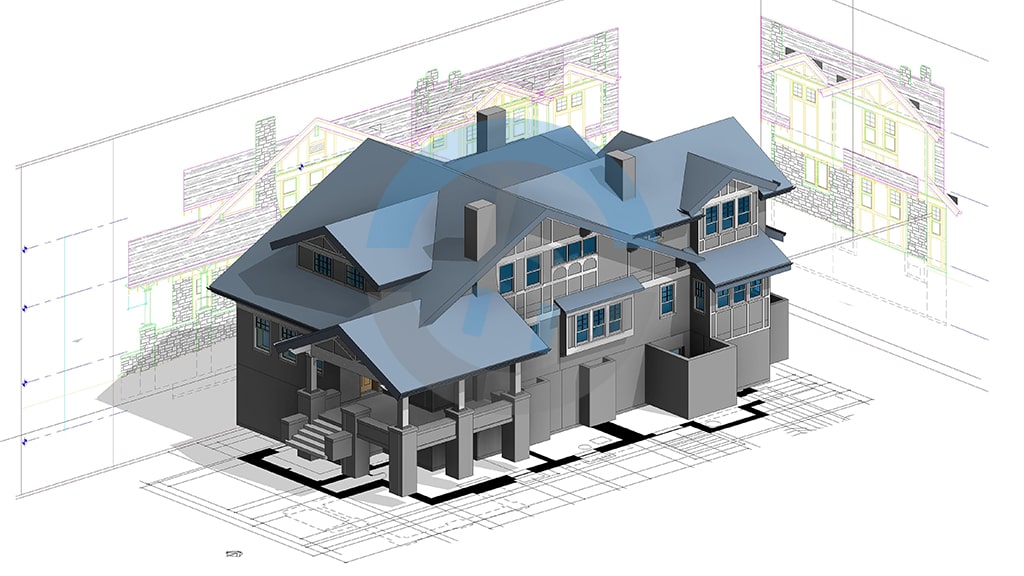The Ultimate Guide to PDF to Revit BIM Conversion: Unveiling the Benefits

The digital age in architecture, engineering, and construction (AEC) industries is a testament to the regular and constant change that is destined to occur due to the ongoing shift in workflows brought about by digitalization. An example of such progressive change process is a document saving step in the form of PDF to the Revit Building Information Modeling (BIM). Besides, in the course of that article, its author provides and explanation of the process and reveals the various advantages of it.
Understanding PDF and Revit BIM
Before delving into the advantages of converting PDFs to Revit BIM, let's grasp the fundamentals of each: Before delving into the advantages of converting PDFs to Revit BIM, let's grasp the fundamentals of each:
PDF (Portable Document Format)
PDF is a proven method to exchange files among various operating systems, programs, and devices.
Platform for sending and receiving computer documents which do not depend on these parameters – a software, hardware or OS.
Revit BIM (Building Information Modeling)
Though it is a very advanced technology which helps in the design and operation readability of these places, competency in this field demands a great effort .
Brings together designers, engineers, and build contractors by offering them CAD software, visualization, simulation, and collaboration tools for the building design project.
Benefits of Converting PDF to Revit BIM
1. Collaboration and Communication
The treatment of predesigned PDFs to Revit BIM contributes to the participation of all the parties in the process. The 3D BIM model offers an all-encompassing view to the project participants which will help them to easily communicate their ideas in the group and to make the decisions as a team.
2. Accurate 3D Visualization
Revit BIM, unlike any of PDF file, is dynamically visual because it produces 3D model that is beyond static imaging. The underlying Revit BIM activities play an important role for the stakeholders, as they not only help them to penetrate into the three-dimensional model but also to perceive the design differently from different viewpoint, thus, enabling the engineers to identify flaws early and to enhance the designs before the documents are submitted.
3. Streamlined Workflow Efficiency
PDFs integration into the Revit BIM is time-saving aspect of the workflow as manual data entry and translation can be avoided together with the chance of doing mistakes associated with them. This simple method allows the project team to focus on their existing responsibilities and shorten the duration of the project.
4. Data Accessibility
What guidelines will be developed to improve accessibility and interoperability within the city's data management systems?
The conversion of PDFs to Revit BIM will increase the data interoperability and accessibility from parameter to another software platform. BIM models enable data transfer among different parties performing coordination role, thereby improving consistency and precision in the overall project lifecycle. These go-between roles are performed by different stakeholders in the sequence of the project.
5. Comprehensive Design Documentation
The Revit BIM allows creating holistic design documentation which contains well-elaborated drawings, courses, and materials. The posting of PDFs to Revit BIM allows architects and engineers to produce more accurate CAD documentation that adheres to the industry standard and the regulations.
6. Iterative Design
To take the examples from design once again, its cyclic nature needs constant renewal and improvement. electronization of PDFs to Revit BIM cancels restrictions for design teams to revise thoughts quickly, make outgoing changes in real-time through engaging feedback & going over to save acreage efficiency, sustainability and aesthetics.
7. Data Analysis and Visualization
The BIM tools inside REVIT includes the ability to analyze and present data, allowing key stakeholders to discover useful information from building data. Consequently, a project team can carry out analysis of a building performance, modeling real-world conditions, and getting valuable information towards improvement of designs and operations of the building.
8. Future-Proofing Designs
In an ever-evolving industry landscape, future-proofing designs is paramount. By converting PDFs to Revit BIM, architects and engineers ensure that their designs are compatible with emerging technologies and standards, safeguarding investments and staying ahead of the curve.
Conclusion
Lastly, take points you have made and convert the lack of benefits from PDFs to Revit BIM is unquestioned. Teamwork and communication go up a notch. Along with this, there is an increase in the efficiency of the workflow and future proofing designs. All these are constructed and enjoyed by the owners and designers of the building. This way, AEC professionals should embrace this change process so they may reap the full benefits of this and fuel innovation as well as performance for their clients.











652cc4a8bfcb2.jpg)
